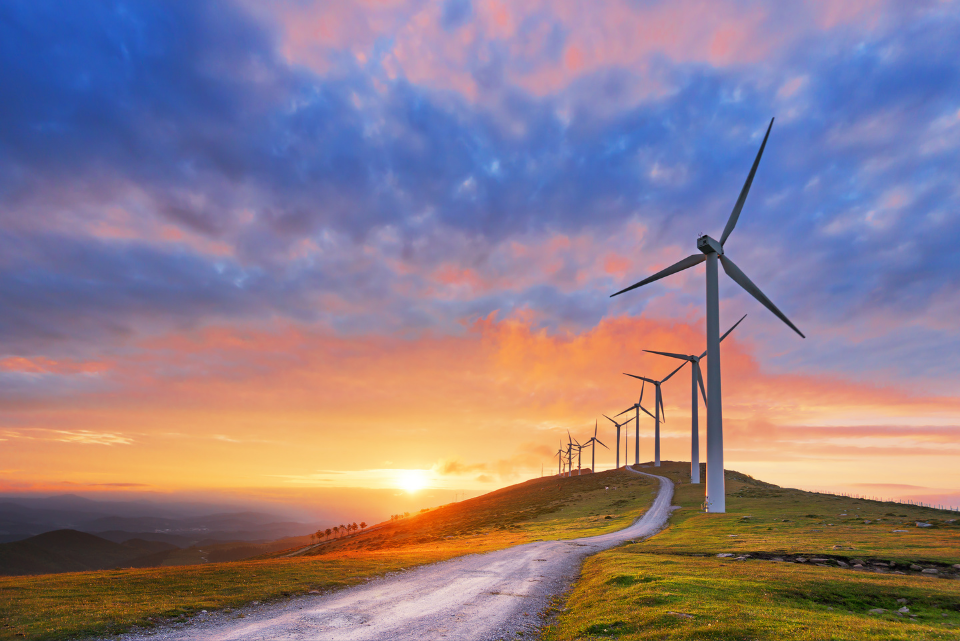Time for action to build a carbon-free energy system
The UK government’s plans for energy decarbonisation show a welcome commitment to systems integration and digitalisation, but flexibility will be needed as we face the urgent challenges ahead.
Quick take:
- The UK government has announced there is to be a new energy systems operator, separate from National Grid, which will have responsibility over both the electricity and gas systems.
- The urgency of the net-zero challenges means there needs to be an overt plan for the architecture of the energy system – key transitions cannot be left to chance or market forces.
- But as well as a ‘top-down’ transformation, there needs to be a shift in thinking to take advantage of decentralised, ‘bottom-up’ opportunities, especially where new technologies are concerned.
In July the UK government revealed more detail than ever before on its plan for decarbonising the energy system. In a series of policy papers and consultations, proposals were set out on the role of a future systems operator; on the digitalisation of the energy system; on the new codes and standards that will be required; and how smart systems and flexibility will be built in to help the energy network transition.
It’s pleasing to see significant steps being made to set the future direction of energy policy to support our Paris Agreement commitments. This is an urgent mission. We must achieve net-zero carbon emissions by 2050 – only 352 months’ time. That’s a short period of time for such a thorough and far-reaching transformation.
The headline proposal in the systems operation paper is the creation of a new systems operator separate from National Grid, with roles in both the electricity and gas systems. Decarbonisation is driving a much stronger integration between different sources of energy, and so if the new operator is able to take a system-wide view then it is certainly a welcome development. I do worry, however, that the perspective is unduly limited to “top down” thinking in a world which digitalisation is increasingly “bottom up”, and in which many of the most interesting energy integration opportunities are intensely local. Hopefully there will be enough flexibility in legislation to let this evolve as the evidence of this change becomes more compelling.
Since privatisation in 1989, there has been no overt system architecture in our energy system – nobody taking a strategic overview of how everything has to fit together. Instead, we have had competitive markets in energy generation and supply, networks forming regulated natural monopolies, and a set of rules, relatively unchanging over time, that organisations must abide by if they want to participate in the system. That works fine in a world where you have a broadly steady state of energy being generated by large coal, gas or nuclear power stations that are remote from the consumer, or supplied as natural gas. But it’s no longer appropriate when the task in hand is to make a rapid system-wide transformation, especially when our future is likely to be increasingly decentralised. Without a ‘guiding mind’ the system will quickly become too costly and difficult to operate, and may develop big problems in terms of resilience.
In the past we’ve relied on a few dozen major power stations for our electrical energy. We’ll still need a good number of those in the decades to come, but we’ll also have millions of tiny energy sources. For example, as electric vehicles become integrated across infrastructure and the built environment, there will be major implications not only for the amount of electricity needed but also for energy consumption patterns, network capacity and system operation overall. Not only will the charging of EVs need to be optimised to manage grid capacity, but there is an opportunity for vehicles to provide reserve capacity – with EVs acting as tiny power stations during times of high demand. To make this a reality, there needs to be interoperability across the system, with data flowing and controls working whatever your make of vehicle, whoever supplied your charger, and whoever your electricity supplier and network companies are. This can’t be left to chance or market forces alone – it requires integrated thinking and planning.
Digitalisation of the whole system is an essential enabler. That’s why I welcome the new digitalisation strategy for energy, which links well to work my colleague Mark Enzer is leading for the Centre for Digital Built Britain. It’s exciting to think about the transformative effects that is likely to have to both consumer experience and the costs of energy in the future.
Standards will be crucial to ensure that the different parts of the system develop in the same direction and at pace. So it’s good too to see the work of the expert panel I chaired for BEIS and Ofgem on engineering standards being recognised and incorporated into the thinking, notably through a focus on governance and ownership of standards as a whole.
Flexibility – from consumers large and small, from the grid itself, and from markets – will be an essential quality that must be built into the system. The government’s paper on smart systems and flexibility provides more detail on how this can be achieved.
All in all, some real actions seem in prospect in what has seemed for some years a vacuum of policy decisions around energy. The main challenge now I think is to set a pace of implementation by government and industry that is consistent with the tight decarbonisation timescales now in front of us, and not to become distracted by the necessary effort of implementing the structural reforms set out, or by concerns to get every decision right first time.
It’s easy to underestimate the time the market needs to digest the framing for and then deliver the major capital programmes needed around hydrogen, road and rail transport electrification, carbon capture, transport and storage, bulk energy storage, and system-wide digitalisation. Conversely, it’s easy to overestimate the time it might take for consumer-facing technologies like electric vehicles to become widespread – we know from other technologies how rapidly this can happen.
It’s also very easy to prevaricate in the hope of making optimal choices in a world where we don’t know the best solutions. With the urgency of net-zero, we don’t have time for that – we need to try multiple pathways at scale and accept that not all will be right, making sure we fail fast and learn.
We also need to recognise the potential of the market to generate and scale entirely new solutions, most likely consumer facing and digitally enabled, and need to make sure the policy and regulatory environment is agile, flexible and accessible enough to enable rather than block such developments, many of which are likely to present cost-effective alternatives to other major capital investments.
The work now published (together with further policy outputs expected in the autumn) lays the foundations for real action. It’s vital both government and the industry seize the moment to accelerate progress in the massive challenge of energy decarbonisation. We have 352 more months to do it.
The main challenge now I think is to set a pace of implementation by government and industry that is consistent with the tight decarbonisation timescales now in front of us, and not to become distracted by the need to get every decision right first time.
Simon Harrison
Mott MacDonald Group head of strategy




